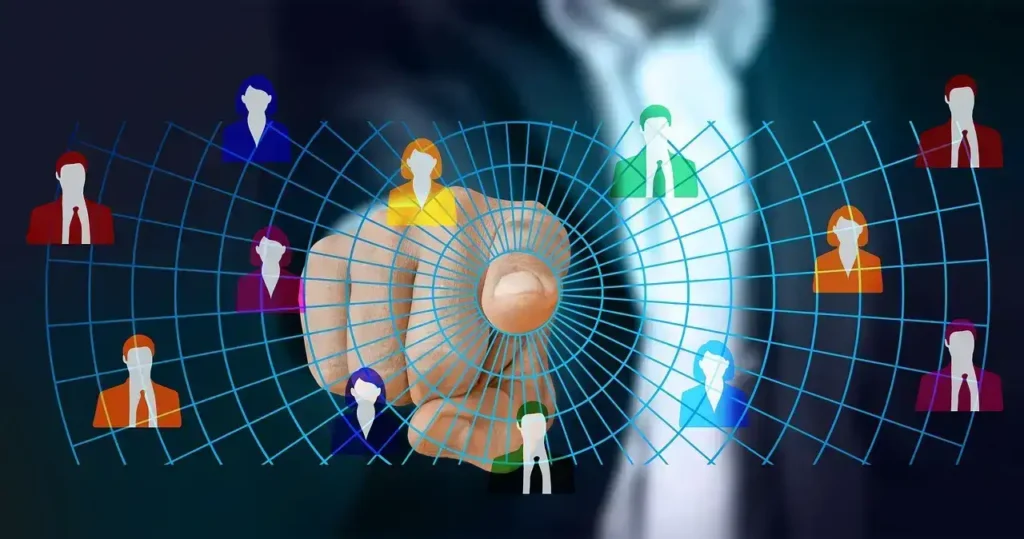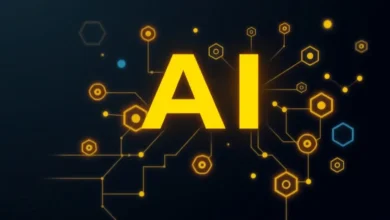Ever thought about how machines can think and learn like us? Welcome to the amazing world of artificial intelligence! This AI basics tutorial is your entry into understanding this cutting-edge tech. You’ll see how AI is changing industries and our everyday lives.
AI is all around us, from self-driving cars to virtual assistants. This guide will cover the main ideas, making AI easy to understand. You’ll learn about machine learning, neural networks, and the ethics of AI.
Whether you’re just starting or want to know more about tech, this intro to AI will give you a strong base. Get ready to dive into the world of AI basics and discover its vast potential.

Table Of Contents
- 1 Understanding Artificial Intelligence Fundamentals
- 2 AI Basics Tutorial: Getting Started with Machine Learning
- 3 Core Components of Artificial Intelligence
- 4 Introduction to Machine Learning Fundamentals
- 5 Natural Language Processing Essentials
- 6 Deep Learning and Neural Networks
- 7 Computer Vision and Image Processing
- 8 Practical Applications of AI in Today’s World
- 9 Essential AI Development Tools and Platforms
- 10 Ethical Considerations in AI Development
- 11 Conclusion
- 12 FAQ About AI Basics Tutorial
- 12.1 What is artificial intelligence?
- 12.2 How is machine learning different from AI?
- 12.3 What are the main types of machine learning?
- 12.4 What is deep learning?
- 12.5 What is natural language processing?
- 12.6 How is AI used in business?
- 12.7 What programming languages are commonly used for AI development?
- 12.8 What are some ethical concerns surrounding AI?
- 12.9 What is computer vision?
- 12.10 How can I start learning AI as a beginner?
Key Takeaways
- AI basics cover a wide range of technologies and applications
- Understanding AI fundamentals is crucial in today’s tech-driven world
- Machine learning is a key component of artificial intelligence
- AI impacts various industries, from healthcare to smart homes
- Ethical considerations play a vital role in AI development
Understanding Artificial Intelligence Fundamentals
Artificial intelligence 101 is all about AI basics tutorial and specially all about the basics. You’re about to explore AI’s definition, history, and types.
What is Artificial Intelligence?
In this AI basics tutorial, AI means computer systems that act like humans. They can learn, reason, and solve problems. Think of AI as the brain behind smart devices and software that make life easier.
Historical Evolution of AI
AI has grown a lot since the 1950s. It started with simple systems and now has complex neural networks. Early AI focused on logic and problem-solving. Today, it handles tasks like natural language processing and image recognition.
Types of Artificial Intelligence Systems
AI has different types, each with its own abilities. Let’s look at the main ones:
| AI Type | Description | Example |
|---|---|---|
| Narrow AI | Designed for specific tasks | Siri, Alexa |
| General AI | Human-like reasoning across various domains | Still theoretical |
| Machine Learning | Systems that improve with experience | Netflix recommendations |
| Deep Learning | Uses neural networks to process complex data | Image recognition software |
Knowing these basics is key to understanding AI better. As you learn more, you’ll see how AI algorithms explained simply can make this field less mysterious.
AI Basics Tutorial: Getting Started with Machine Learning
Machine learning is a key part of artificial intelligence. As you start your AI journey, learning about machine learning is key. It’s about making systems that learn and get better over time, without being programmed.
To begin with machine learning, you need to understand its basics. These include:
- Supervised learning
- Unsupervised learning
- Reinforcement learning
Each type of learning has its own role in AI. For instance, supervised learning is for predicting things. Unsupervised learning finds patterns in data.
When starting with AI, picking the right tools is important. Python is a top choice for machine learning because it’s easy to use and has great libraries. Here’s a look at some common machine learning libraries:
| Library | Main Use | Difficulty Level |
|---|---|---|
| Scikit-learn | General ML tasks | Beginner-friendly |
| TensorFlow | Deep learning | Intermediate |
| PyTorch | Research and flexibility | Advanced |
As you learn more about machine learning, you’ll meet algorithms like decision trees and neural networks. Each has its own strengths and weaknesses. They’re good for different kinds of problems.
Remember, getting good at machine learning takes time and practice. Start with simple projects and get more complex as you get better.
Core Components of Artificial Intelligence
Artificial Intelligence (AI) is built on three key pillars. These components work together to create intelligent systems. They can learn, adapt, and make decisions. Let’s explore each one to understand how AI functions.
Data Processing and Analysis
Data processing for AI is the foundation of any intelligent system. It involves cleaning, organizing, and preparing data for analysis. This step is crucial in data science for beginners. Raw data is transformed into a format that machines can understand and use effectively.
Algorithm Development
Algorithms are the brains behind AI systems. They’re sets of rules that guide how data is processed and decisions are made. Developing effective algorithms requires a deep understanding of mathematics and computer science. These algorithms range from simple decision trees to complex neural networks.
Model Training and Validation
AI model training is where the magic happens. This process involves feeding data into algorithms to create a model that can make predictions or decisions. The model learns patterns from the data, improving its performance over time. Validation ensures the model works correctly on new, unseen data.
| Component | Purpose | Importance |
|---|---|---|
| Data Processing | Prepare data for analysis | Ensures quality input for AI systems |
| Algorithm Development | Create decision-making rules | Forms the logic core of AI systems |
| Model Training | Teach AI to make predictions | Enables AI to learn from data |
Understanding these core components is essential for anyone starting in AI. They form the backbone of all intelligent systems. From simple chatbots to complex autonomous vehicles.
Introduction to Machine Learning Fundamentals
Machine learning is key to many AI systems. You’ll learn about three main types: supervised, unsupervised, and reinforcement learning.
Supervised learning uses labeled data to train models. It’s like having a teacher show you the answers. It’s used for tasks like image classification and spam detection.
Unsupervised learning finds patterns in data without labels. It’s like exploring a new city without a map. It’s great for customer segmentation and finding anomalies.
Reinforcement learning is about learning through trial and error. The model gets rewards or penalties for its actions.
It’s used in game-playing AIs and robotic control

| Learning Type | Data Requirement | Common Applications |
|---|---|---|
| Supervised | Labeled data | Predictive modeling, Classification |
| Unsupervised | Unlabeled data | Clustering, Dimensionality reduction |
| Reinforcement | Reward signals | Game AI, Robotics |
Each type has its own strengths and best uses. Knowing these basics helps you pick the right method for your AI projects.
Natural Language Processing Essentials
Natural language processing in this AI basics tutorial, is a field that connects human talk and computer understanding. This primer will cover the main ideas of this fast-growing area.
Text Analysis and Processing
Text analysis is key in natural language processing. It breaks down written content into smaller parts. Tasks like tokenization split text into words or phrases.
In AI basics tutorial, Part-of-speech tagging gives each word a grammatical label. This helps computers understand sentence structure better.
Language Understanding Systems
For this AI basics tutorial, Language understanding systems aim to get the meaning behind human speech and text. They use complex algorithms to understand context, idioms, and even sarcasm. As you learn more about computational linguistics, you’ll see how named entity recognition and syntactic parsing work.
Sentiment Analysis Basics
Sentiment analysis finds the emotional tone in text. It’s used in social media and customer feedback analysis. By classifying text as positive, negative, or neutral, businesses learn what people think.
| NLP Task | Description | Application |
|---|---|---|
| Text Classification | Categorizing text into predefined groups | Spam detection, topic labeling |
| Named Entity Recognition | Identifying proper nouns in text | Information extraction, question answering |
| Machine Translation | Translating text from one language to another | Cross-language communication, localization |
As you move forward in natural language processing, you’ll see how these basics come together. They create powerful tools that change how we use technology.
Deep Learning and Neural Networks
Deep learning and neural networks are key to modern AI. This introduction will cover the basics of these tools. We’ll explore how they work and their role in AI.

Neural Network Architecture
Neural networks are like the human brain. They have nodes in layers. The input layer gets data, hidden layers process it, and the output layer shows the results.
This setup lets neural networks learn and predict complex things.
Training Neural Networks
Training is crucial for neural networks. They learn from big datasets. The network adjusts its settings to get better.
This process, called backpropagation, is at the heart of deep learning.
Applications of Deep Learning
Deep learning is used in many AI tools we use every day. It’s changing fields like image recognition and natural language processing. Here are some examples:
| Application | Description | Example |
|---|---|---|
| Computer Vision | Analyzing and interpreting visual data | Facial recognition systems |
| Natural Language Processing | Understanding and generating human language | Chatbots and virtual assistants |
| Speech Recognition | Converting spoken words to text | Voice-controlled devices |
| Autonomous Vehicles | Self-driving cars and drones | Tesla’s Autopilot system |
Exploring deep learning, you’ll see how it’s changing our world. Neural networks are getting more powerful, opening up new areas in AI.
Computer Vision and Image Processing
Computer vision is a key part of AI technology. It teaches machines to understand visual information. Learning about computer vision basics opens doors in robotics and more.
In robotics 101, you learn how computer vision helps robots. They use cameras and sensors to see their world. This lets them find objects and avoid things.
Image processing is a big part of computer vision. It makes digital images better or gets useful info from them. Here are some common techniques:
- Noise reduction
- Edge detection
- Color correction
- Image segmentation
Computer vision has many uses. It’s in facial recognition, quality control, and more. It’s changing many industries.
| Application | Description | Industry |
|---|---|---|
| Autonomous Vehicles | Detecting road signs, pedestrians, and other vehicles | Transportation |
| Medical Imaging | Analyzing X-rays, MRIs, and CT scans for diagnosis | Healthcare |
| Facial Recognition | Identifying individuals in photos or video footage | Security |
Exploring computer vision reveals its vast potential. It can change how we use technology. It’s improving augmented reality and helping the visually impaired.
Practical Applications of AI in Today’s World
Remember in this AI basics tutorial, AI is changing many areas, making things more efficient and better for us. Let’s look at some important uses of AI in different fields.
Business Applications
In business and this this AI basics tutorial, AI makes things run smoother and faster. Companies use AI chatbots to help with customer service, cutting down on wait times and making people happier.
In this AI basics tutorial, AI also predicts market trends, helping businesses make smart choices. So with AI basics Tutorial, AI automates boring tasks, letting workers do more creative and important work from this AI basics tutorial.
Healthcare Solutions
AI is changing healthcare, bringing new ways to diagnose and treat diseases. It uses machine learning to look at medical images and find problems quickly. We think in this AI basics tutorial, that AI helps find new medicines faster too.
Wearable devices with AI keep an eye on your health, sending alerts to doctors if something’s wrong.
Smart Home Technology
In this AI basics tutorial, AI makes your home smarter. Voice assistants like Alexa and Google Home control lights, temperature, and security.
AI thermostats learn your habits and adjust on their own, saving energy. Smart fridges recognize what you have and suggest recipes, making cooking easier.

This overview shows in this AI basics Tutorial, how AI is becoming a big part of our lives, solving problems we thought were impossible. As AI grows, we’ll see even more cool and useful uses in many areas.
Essential AI Development Tools and Platforms
Starting with AI development is both thrilling and daunting. You’ll need the right tools to make your ideas real. Let’s look at some key resources to kickstart your AI journey.
Popular Programming Languages for AI
So, in this AI basics tutorial, Python is the top choice for AI programming. It’s easy to learn and has lots of libraries. R is great for stats, while Java and C++ are for complex AI projects in our article about AI basics tutorial .
AI Development Frameworks
TensorFlow and PyTorch are leaders in AI frameworks. They’re powerful for machine learning and deep learning.
Keras makes neural networks easier, and Scikit-learn is top for data analysis. Many beginner tutorials use these frameworks.
Cloud-based AI Services
The best examples in AI basics tutorial is Cloud and Google. Yes, Cloud platforms like AWS, Google Cloud, and Azure offer strong AI services. They have pre-trained models and scalable infrastructure. These services can really boost your AI projects.
| Tool Type | Examples | Best For |
|---|---|---|
| Languages | Python, R, Java | Coding AI algorithms |
| Frameworks | TensorFlow, PyTorch | Building ML models |
| Cloud Services | AWS, Google Cloud | Scaling AI solutions |
For practice, check out ai basics tutorials on GitHub. These repositories have code samples and projects. Remember, the best way to learn AI is by doing in this AI basics tutorial.
Start small, experiment often, and don’t be afraid to make mistakes!
Ethical Considerations in AI Development
We think in this AI basics tutorial, As AI technology gets better, we must think about its ethics. We need to understand how AI affects society and the rules for making it right. Ethical AI focuses on being open, fair, and accountable.
Artificial general intelligence makes us wonder about our future with machines. As AI gets more complex, we must worry about privacy, jobs, and how it makes decisions.
“With great power comes great responsibility.” This applies to AI development as much as it does to superheroes.
An AI algorithms overview shows we need to watch out for bias and fairness. Developers must make sure their algorithms don’t add to society’s problems or create new ones.
| Ethical Principle | Description | Implementation Challenge |
|---|---|---|
| Transparency | AI systems should be explainable and understandable | Balancing complexity with clarity |
| Fairness | AI should not discriminate against protected groups | Defining and measuring fairness across diverse populations |
| Privacy | AI must respect user data and consent | Maintaining utility while protecting personal information |
| Accountability | Clear responsibility for AI decisions and outcomes | Establishing liability in autonomous systems |
By tackling these ethical issues in this AI basics tutorial, we can make AI that helps society. The aim is to improve human abilities, not replace them.
Conclusion
You’ve started your journey into the world of artificial intelligence. This tutorial has covered important topics like machine learning and deep neural networks. To keep learning, check out ai basics tutorial pdfs online for more in-depth study.
Many websites have free AI tutorials in PDF format. These are great for learning offline. They also include practical exercises to help you understand better. Remember, practicing what you learn is key to mastering AI.
For those who prefer watching, AI tutorial YouTube channels are a great resource. They show real-world uses of AI, making it easier to understand. Combining written materials with video lessons will help you grasp AI basics Tutorial well.
As you move forward, keep an eye on new AI advancements. The field is always changing, offering lots of opportunities for those who keep learning. Your AI journey is just starting!
FAQ About AI Basics Tutorial
What is artificial intelligence?
From this AI basics tutorial, AI is a field in computer science. It aims to make machines smart enough to do things humans can. This includes learning, solving problems, seeing, and understanding language.
How is machine learning different from AI?
Machine learning is a part of AI. It creates algorithms and models for computers to get better at tasks. They do this through experience, not by being told how to do it.
What are the main types of machine learning?
In this AI basics Tutorial, there are three main types of machine learning. These are supervised learning, unsupervised learning, and reinforcement learning. Each type has its own way of training models and solving problems.
What is deep learning?
Deep learning is a part of machine learning. It uses artificial neural networks with many layers. This makes it great for tasks like recognizing images and speech.
What is natural language processing?
Natural language processing (NLP) is a part of AI. It deals with how computers and humans talk to each other. It helps machines understand, interpret, and create human language.
How is AI used in business?
AI is used in business in many ways. It includes chatbots for customer service, predictive analytics, personalized marketing, fraud detection, and automating processes. It helps businesses in many areas.
What programming languages are commonly used for AI development?
Popular languages for AI development are Python, R, Java, and C++. Python is especially liked because it’s easy to use and has lots of libraries for AI and machine learning.
What are some ethical concerns surrounding AI?
There are several ethical concerns with AI. These include bias in algorithms, privacy issues, jobs being lost, who to blame for AI mistakes, and AI being used for bad things.
What is computer vision?
Computer vision is a part of AI. It teaches computers to understand and interpret visual information. It’s used in things like facial recognition, self-driving cars, and analyzing medical images.
How can I start learning AI as a beginner?
To start learning AI, you can take online courses, read books, practice coding in Python, and work on small projects. There are many free resources and tutorials for beginners.











